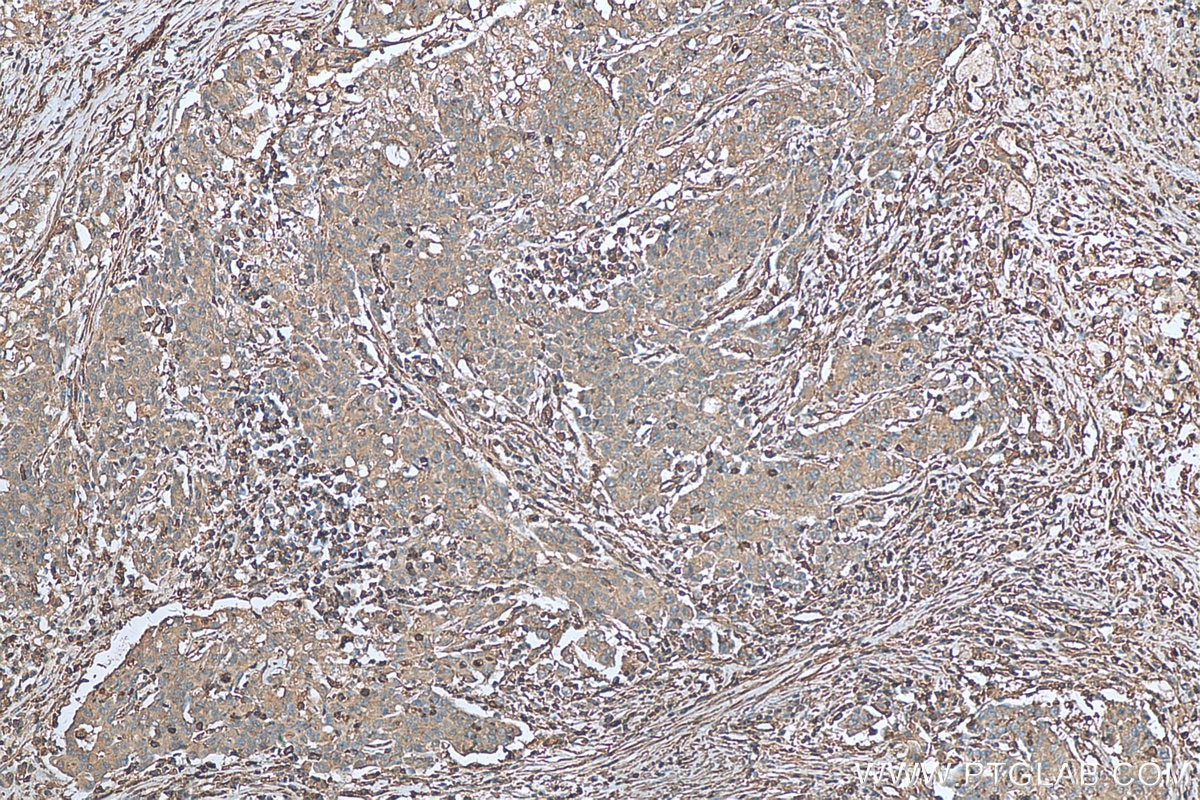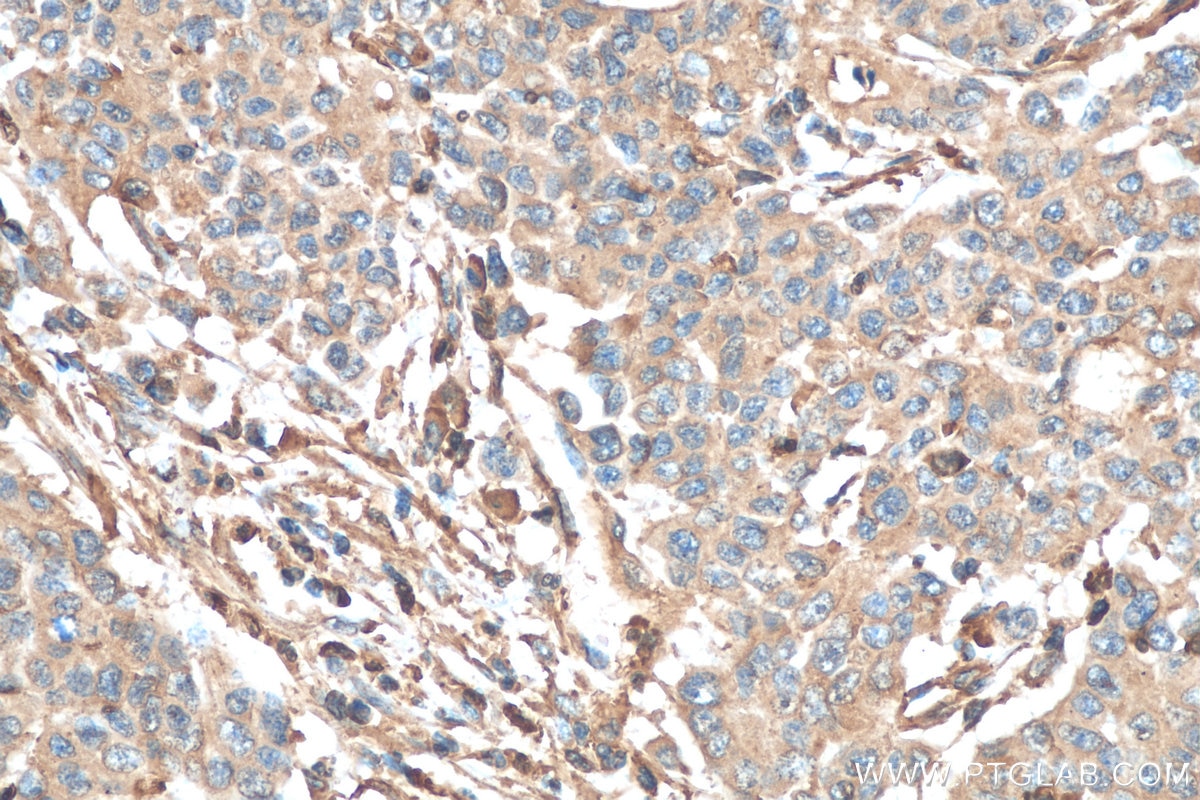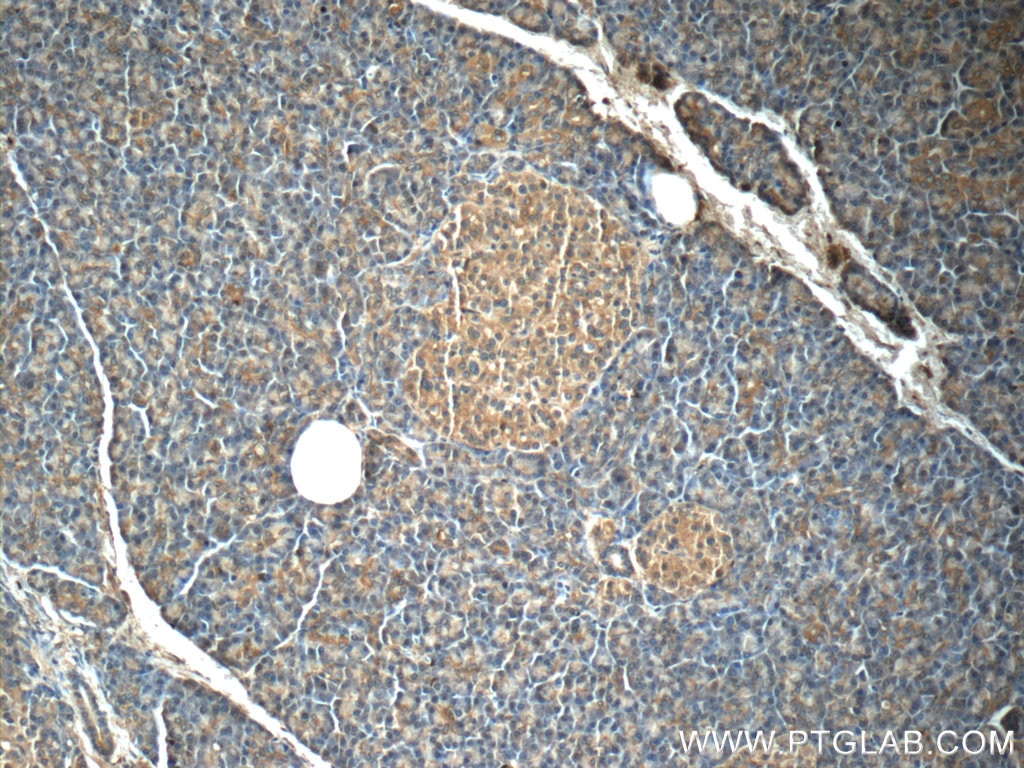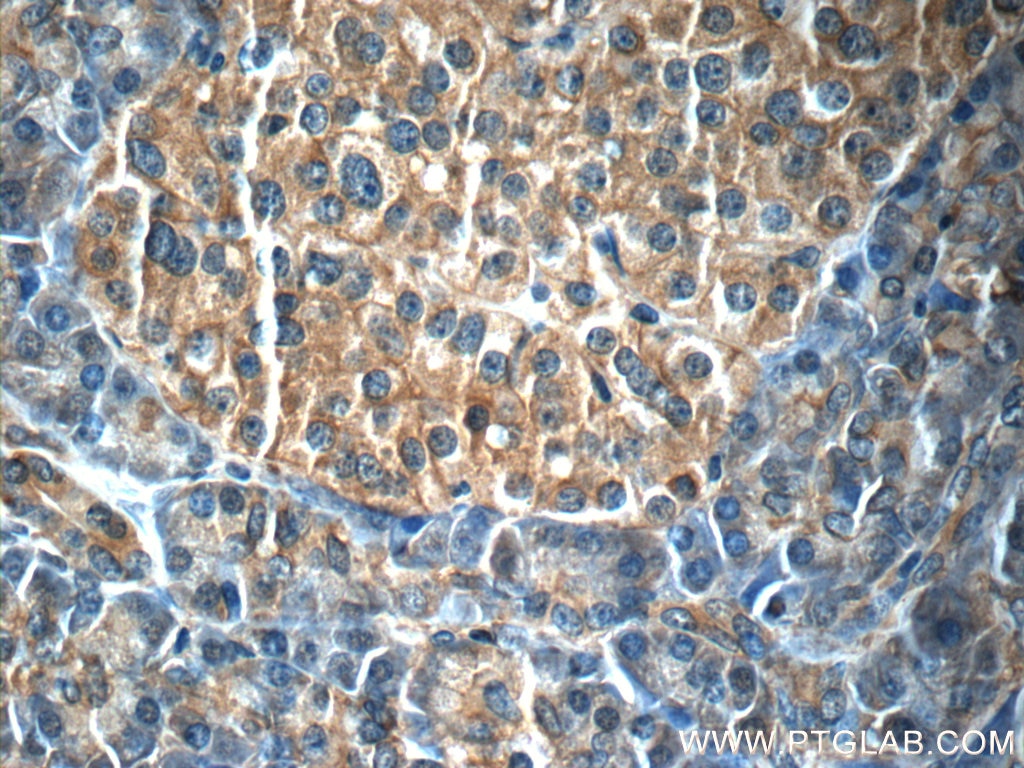IL-23A Monoklonaler Antikörper
IL-23A Monoklonal Antikörper für IHC, ELISA
Wirt / Isotyp
Maus / IgG1
Getestete Reaktivität
human
Anwendung
WB, IHC, IF, ELISA
Konjugation
Unkonjugiert
CloneNo.
1D5D3
Kat-Nr. : 66196-1-Ig
Synonyme
Galerie der Validierungsdaten
Geprüfte Anwendungen
| Erfolgreiche Detektion in IHC | humanes Magenkrebsgewebe, humanes Pankreasgewebe Hinweis: Antigendemaskierung mit TE-Puffer pH 9,0 empfohlen. (*) Wahlweise kann die Antigendemaskierung auch mit Citratpuffer pH 6,0 erfolgen. |
Empfohlene Verdünnung
| Anwendung | Verdünnung |
|---|---|
| Immunhistochemie (IHC) | IHC : 1:50-1:500 |
| It is recommended that this reagent should be titrated in each testing system to obtain optimal results. | |
| Sample-dependent, check data in validation data gallery | |
Veröffentlichte Anwendungen
| WB | See 2 publications below |
| IHC | See 1 publications below |
| IF | See 1 publications below |
Produktinformation
66196-1-Ig bindet in WB, IHC, IF, ELISA IL-23A und zeigt Reaktivität mit human
| Getestete Reaktivität | human |
| In Publikationen genannte Reaktivität | human |
| Wirt / Isotyp | Maus / IgG1 |
| Klonalität | Monoklonal |
| Typ | Antikörper |
| Immunogen | IL-23A fusion protein Ag19406 |
| Vollständiger Name | interleukin 23, alpha subunit p19 |
| Berechnetes Molekulargewicht | 189 aa, 21 kDa |
| GenBank-Zugangsnummer | BC066268 |
| Gene symbol | IL23A |
| Gene ID (NCBI) | 51561 |
| Konjugation | Unkonjugiert |
| Form | Liquid |
| Reinigungsmethode | Protein-G-Reinigung |
| Lagerungspuffer | PBS mit 0.02% Natriumazid und 50% Glycerin pH 7.3. |
| Lagerungsbedingungen | Bei -20°C lagern. Nach dem Versand ein Jahr lang stabil Aliquotieren ist bei -20oC Lagerung nicht notwendig. 20ul Größen enthalten 0,1% BSA. |
Hintergrundinformationen
Interleukin 23 (IL-23) is a member of the IL12 cytokine family and composed of two subunits, IL12p40 and IL23p19. It is produced by antigen presenting cells and has been shown to promote the production and survival of a distinct lineage of T-cells called TH17 cells. A functional receptor for IL-23 (the IL-23 receptor) has been identified and is composed of Il-12Rβ1 and IL-23R. IL-23 is expressed chiefly by the macrophages and DCs. The IL-23R is found on memory T cells, NKT cells, macrophages, DCs, and naive T cells upon activation by TGF-βand IL-6. The main biological effects of IL-23 identified initially consist of stimulation of antigen presentation by DCs, T cell differentiation to Th17 cells, and production of interferon-γ (IFN-γ). IL-23 acts also as an end-stage effector cytokine through direct action on macrophages.
Protokolle
| Produktspezifische Protokolle | |
|---|---|
| IHC protocol for IL-23A antibody 66196-1-Ig | Protokoll herunterladen |
| Standard-Protokolle | |
|---|---|
| Klicken Sie hier, um unsere Standardprotokolle anzuzeigen |
Publikationen
| Species | Application | Title |
|---|---|---|
Thyroid A MULTICENTER, SINGLE-BLIND, CASE-CONTROL, IMMUNOHISTOCHEMICAL STUDY OF ORBITAL TISSUE IN THYROID EYE DISEASE | ||
J Immunol Polarization and β-Glucan Reprogram Immunomodulatory Metabolism in Human Macrophages and Ex Vivo in Human Lung Cancer Tissues | ||
Cancer Lett PDE4D/cAMP/IL-23 axis determines the immunotherapy efficacy of lung adenocarcinoma via activating the IL-9 autocrine loop of cytotoxic T lymphocytes | ||
Gut IL23 induces IL23R recycling and amplifies innate receptor-induced signalling and cytokines in human macrophages, and the IBD-protective IL23R R381Q variant modulates these outcomes. |





